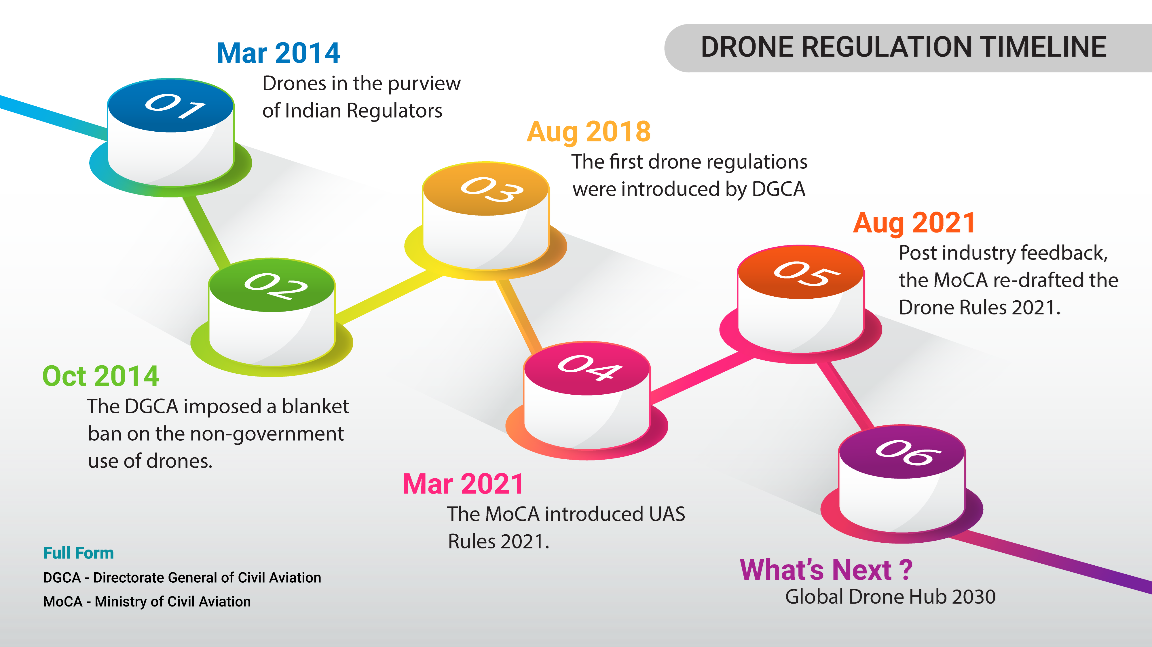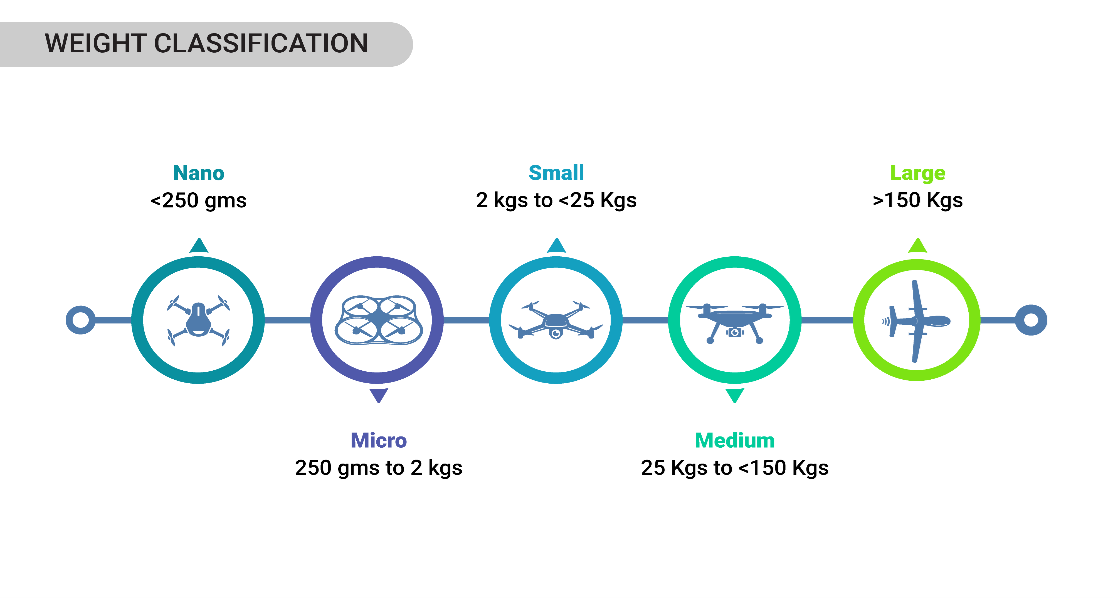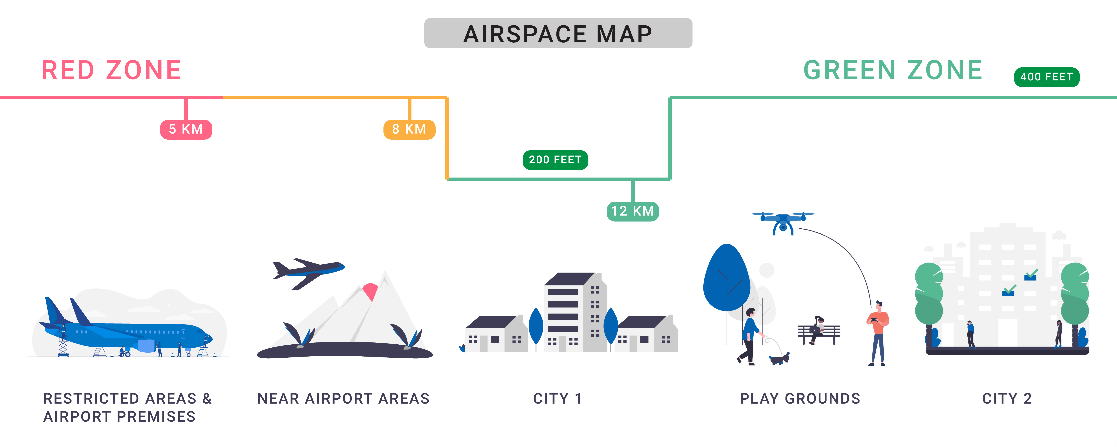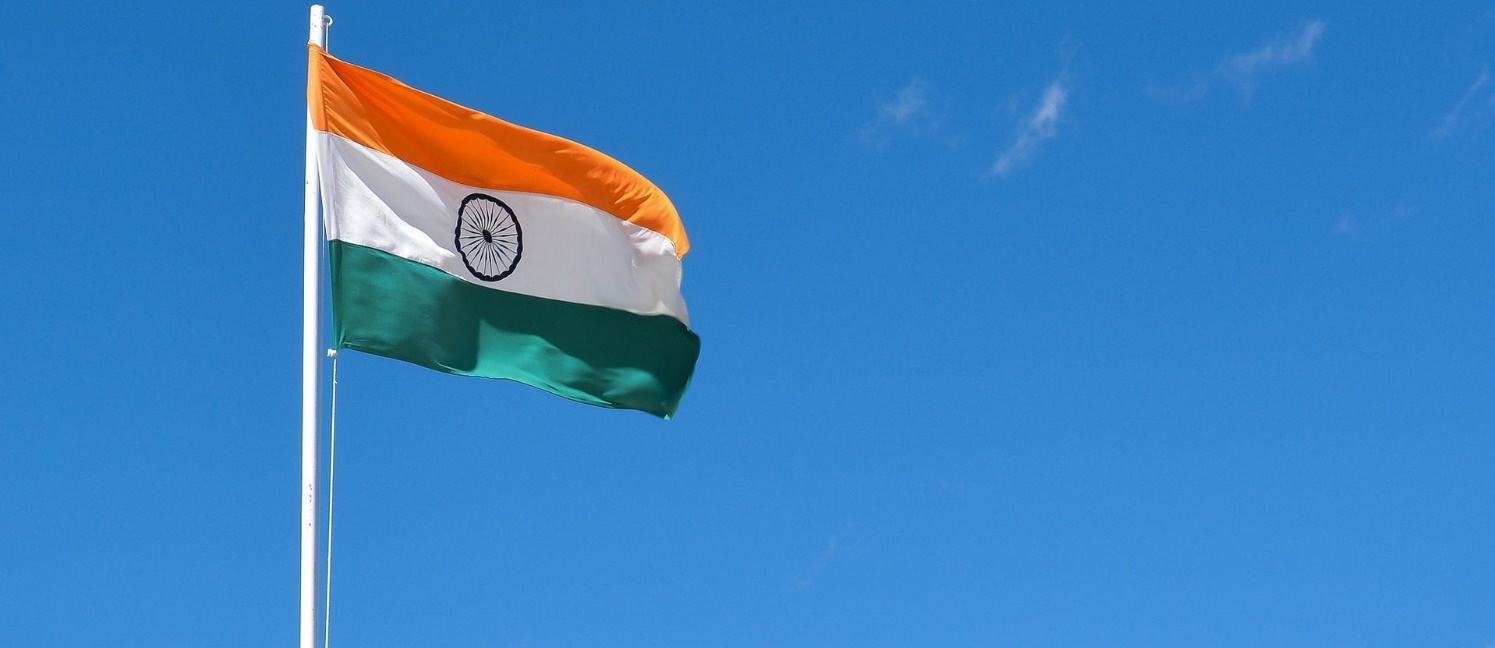India’s New Drone Regulations
On 25th August 2021, the Ministry of Civil Aviation, India published Drones Rules 2021, a set of new drone regulations to liberalize the R&D, manufacturing and operation of drones in the civil airspace. The new rules will free up years of pent-up demand and supply for the use of drones in India and is a significant step towards the government’s ambition to make India the drone hub of the world by 2030.
A Brief History
Drones first came in the eyes of India’s regulators in 2014 when a restaurant in Mumbai performed a publicity stunt of delivered a pizza by drone to a high-rise apartment. Alarmed at the security concerns posed by this new technology, the Director General of Civil Aviation (DGCA) swiftly imposed a blanket ban on the non-government use of drones in October 2014.
It took the next 4 years for drone technology and its benefits to be understood well-enough for the DGCA to permit their use under the first drone regulations introduced in August 2018. These regulations introduced several concepts – a Digital Sky portal with green/yellow/red zones for drone flights, a No Permission No Takeoff (NPNT) framework which would prevent a drone from taking off if it did not have the requisite digital permission, and a remote pilot license for operating drones. These regulations were devised largely keeping in mind security concerns about unauthorized use of drones. While some of the concepts introduced by the regulations were innovative, their on-ground implementation lagged and they were not able to solve the issues that they intended to solve. The regulations did little to stop the unauthorized use of drones but instead made operations difficult for people who wanted to use drones legally.
In March 2021, the Ministry of Civil Aviation (MoCA) introduced the UAS Rules 2021 which built upon the original regulations and introduced more permissions and authorizations in the process of R&D and manufacturing of drones. These rules were largely considered impractical and untenable and prompted a lot of concerns from the industry. After listening to industry feedback, the MoCA went back to the drawing board and drafted the Drone Rules 2021 which were published in August 2021.

What are the key tenants of the new Drones Rules?
The Drones Rule 2021 are based on a premise of trust, self-certification, and non-intrusive monitoring. The onus of compliance is shifted from the drone manufacturer to the drone operator. The three key tenants to have compliant drone operations under the new rules are:
- The drone must be certified and registered
- The drone operator must have a remote pilot license
- The drone operation must obey airspace rules of green/yellow/red zones
The number of permissions and authorizations for activities have been reduced from 25 under previous regulations to just 5.
- Drone Certification: Drones have been classified into five categories – nano, micro, small, medium and large – depending on their weight. A drone model is required to be certified through an accredited lab to ensure it meets the design, equipment, performance, and safety standards as per DGCA guidelines. Certification is not required for nano drones and drones developed for R&D and prototyping purposes.

- Drone Pilot License: All persons operating a drone in the civil airspace are required to have a drone remote pilot license. A person must be over 18 years, have passed 10th standard examination and undergone the prescribed training at an approved remote pilot training organization (RPTO) in order to obtain a pilot license. The DGCA will issue the remote pilot license to a person through Digital Sky within 15 days after receiving the training certificate from a RPTO. No remote pilot licence is required to operate nano drones and micro drones for recreational use.
- Airspace Map for Seamless Drone Operations: An interactive airspace map is available on the Digital Sky portal – which shows the division of the Indian airspace into green, yellow and red zones. Absolutely no permissions are required for drone operations in Green zones. Permission from local Air Traffic Control (ATC) centers are required to operate drones in Yellow zones, which are close to airports. Permission from the central government is required to operate drones in Red zones, which are airspaces within 5km of an airport or sensitive location.

How will the new rules transform the use of drones in India?
Under the new drone rules,
- Innovation, research and development, manufacturing of drones will increase as all authorizations/permissions for these activities have been abolished
- The demand and operations for use of drones in various industries will drastically increase as more than 90% of the Indian airspace is marked as a Green zone for drone flights
- The scope of indigenously developed solutions that will meet the certification and security standards will increase
The rules will significantly amplify business activities in this sector and industries as diverse as agriculture, oil & gas, construction, power & utilities, retail, healthcare will start experimentation and adoption of drone-based solutions to transform their operations.
Under the new drone rules, India will likely become a multi-billion dollar market for commercial drone operations in the next five years, and the sector will create new and unique employment opportunities for drone pilots, engineers and technical professionals.
The Future of Regulations
While the new drone rules have, the government is working on several additional policies and standard operating procedures (SOPs) to make drone operations safer, secure and scalable. These include the Unmanned Traffic Management (UTM) policy and SOPs on remote pilot training and Beyond Visual Line of Sight (BVLOS) flights. As technology matures and new markets open up, the regulations will have to be agile in responding to ensure that the full potential of this emerging technology of strategic importance is realized.


